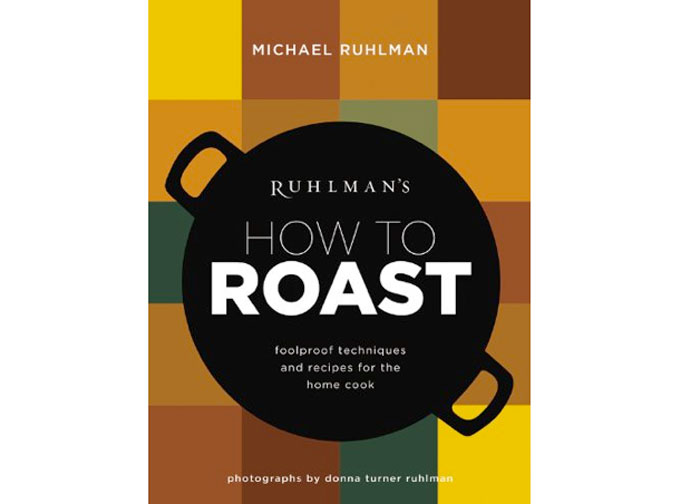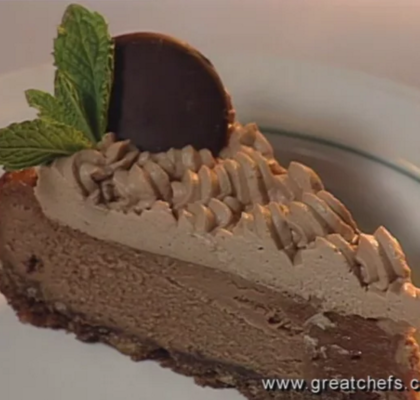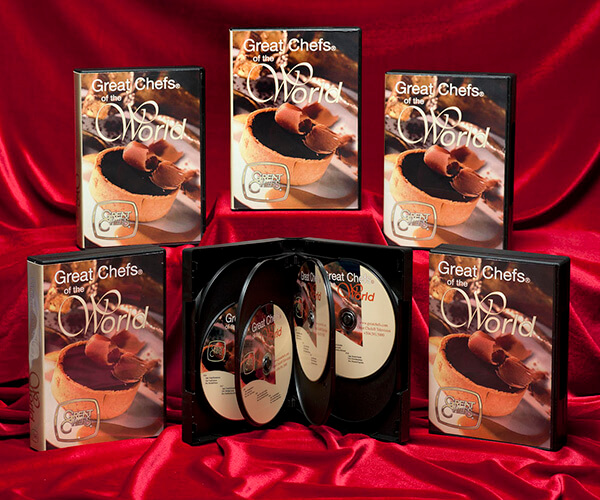By the Book: Michael Ruhlman’s Thanksgiving Turkey
November 15th 11:11am, 2014
I’m no stranger to roasting: leg of lamb, whole chickens, pot roasts, pork loins. But the one roast I’ve yet to tackle is arguably the one most Americans have made: the Thanksgiving turkey. That bird is my mom’s domain; she even has a separate roasting oven that makes an appearance once a year just for the task. So when I picked up a copy of Michael Ruhlman’s new book How to Roast, I immediately knew the recipe I was going to try. (And I hoped that, should questions arise, I could always ask Ruhlman in person at the next installment of the Sauce Celebrity Chef Series Nov. 19.)
Whereas his last cookbook, Egg, was dedicated to a single ingredient, How to Roast focuses on the versatility of a technique. He goes into great detail about what happens to different proteins while roasting at high, medium and low temperatures and explores specialty techniques like pan-roasting and spit-roasting. Compared to most cookbooks, How to Roast contains only a modest 20 recipes. However, once you’ve mastered the technique with dishes like the iconic roast chicken, rack of lamb or roasted root vegetables, you can apply it to an infinite number of proteins, veggies or even fruit.
Ruhlman’s turkey recipe largely follows that of his roast chicken. Stuff the cavity with aromatics, truss the bird, coat the skin in butter and salt and roast to burnished perfection. However, a larger bird means the breast often dries out before the legs are finished cooking, relegating white meat fans (allegedly they exist) to dry, flavorless morsels. Ruhlman aims to solve this annual Thanksgiving conundrum with an unusual solution: break down the turkey halfway through cooking. He removes the legs and returns them to the roasting pan to continue roasting while the breast rests. This, he says, prevents the breast from overcooking while the legs finish. Then, the meat is carved and returned to the roasting pan to rest in a pool of hot stock, thereby ensuring juicy turkey for all.
Of course, the recipe entails trussing and breaking down a 12-pound bird; thankfully, detailed illustrations show how to tackle both actions step by step. Except for one slightly mangled thigh, I kept both legs intact and returned them to the roasting pan to cook, noting how hilarious a partially carved turkey carcass looks.
While the legs rested, the roasting pan took a trip to the stovetop – not for making traditional gravy but a rich stock, almost like a turkey jus. I sliced up the meat and returned it all to the pan, where Ruhlman says it can remain in a warm oven up to four hours. By this time the smell of roast turkey had filled the house, and no one was going to wait that long.
As promised, the recipe delivered juicy, succulent white meat, though the skin lacked that tasty brown crispness that develops with more time in the oven. Meanwhile, the gorgeous-looking legs seemed a tad dry, possibly from carving them from the bird without letting it rest longer than a few minutes. Still, the turkey jus added moisture and there was plenty leftover to make a fine gravy, which will be my contribution to our real Thanksgiving meal. After all, Mom has already prepped her turkey oven.
Michael Ruhlman’s Thanksgiving Turkey
10 servings
1 (10- to 12-lb./4.5- to 5.5-kg.) turkey
Kosher salt
2 celery ribs, cut into large chunks
½ Spanish onion, quartered
½ lemon, halved again
1 bunch thyme (optional)
1 bunch sage (optional)
½ cup (110 g.) butter, melted
1 cup (240 ml.) dry white wine
2 cups (480 ml.) turkey or chicken stock, preferably homemade
• About 4 hours before you plan to start roasting, remove the turkey from the refrigerator, rinse it, pat it dry and let it sit at room temperature.
• Preheat the oven to 425 degrees, or 400 degrees if you have convection.
• Liberally salt the interior and jam the celery, onion, lemon and herbs (if using) into the cavity of the bird. Truss the bird as you would a chicken. Rain salt evenly all over the bird. Put the bird in a low-sided pan (or elevated on a rack in a roasting pan; you want plenty of circulation around the bird) and put it in the oven.
• Roast at that high temperature for 20 minutes. Pour the melted butter evenly over the bird and lower the oven temperature to 375 degrees, or 350 degrees for convection. Continue to roast until the breast reaches 155 degrees, 60 to 90 minutes, depending on your oven and the size of the bird, basting as you wish.
• Remove the pan from the oven. Show off the bird to your guests. Bring it back to the kitchen. Slice through the skin between the legs and breast. The breast should still be pink, but if it looks cold and raw you can return the entire bird to the oven for 10 more minutes. Put the bird on a large cutting board (preferably with a channel or a depression to hold the bird). Remove each leg at the joint connecting it to the carcass. I reserve the wings for stock the following day rather than serving them, as they’re tough and not terribly meaty.
• Pour off the fat and juices from the roasting pan (I reserve the fat to make a roux to thicken stock for gravy, and I add the juice to the gravy or stock). Return the legs to the pan and return them to the oven. Roast the legs for at least an additional 45 to 60 minutes; if you intend to leave the legs for longer than an hour, turn the oven down to 200°F (95°C) (without convection). The legs will only get better with time and can be left in the over for up to 4 additional hours; don’t worry about the breast, as it will reheat in the stock at the end.
• Remove the legs from the roasting pan. Put the pan over high heat on the stovetop. Add the wine and bring it to a simmer, scraping up the stuck-on skin and browned juices. Add the broth and bring to a simmer, then turn the heat to low.
• Carve the dark meat from the drumstick and thighs and put it in the hot stock in the roasting pan. Remove each breast half from the turkey (be careful not to tear the skin.) Don’t worry if the breast is a little pink; this means it will be juicy as it finishes cooking in the hot stock. Cut the breast crosswise into ¼ to ½ inch (6 to 12 millimeter) slices. Transfer the pieces to the roasting pan with the stock. Turn the burner to high and bring the stock to a simmer. Simmer for a minute or two to ensure that everything is hot and then serve.
The finer points
Gravy
Gravy, a critical part of the Thanksgiving meal, is nothing more than rich turkey stock thickened with flour. To make turkey stock, follow the instruction for Brown Veal Stock (recipe follows), using turkey wings and necks instead of veal bones. Make the stock ahead of time – several days or even a month in advance – and store it in the freezer. To make gravy, simply saute a diced onion in butter, add flour – 1½ tablespoon per cup stock, and cook the flour till it smells like pie crust. Whisk in the cold stock until it has thickened and begins to simmer.
Stuffing
I make a turkey dressing, in effect a savory bread pudding, using plenty of turkey stock for flavor. I call it dressing rather than a stuffing because I cook it separately from the turkey. But if you want to go classical, by all means do so. My recommendation is to roast the stuffed turkey as described above (it will take an additional 30 to 60 minutes), remove the stuffing to the roasting pan with the legs and finish cooking it along with the dark meat until it’s piping hot in the center.
When all have been served
Relax and enjoy this most special of American holidays.
And be sure to save the carcass for making more stock the next day. Just follow the steps for Brown Veal Stock, only there’s no need to roast the bones, as you’ve already done it. Simply break up the carcass, cover with water, heat gently for many hours (adding the vegetables and aromatics at the very end), and then strain.
Brown Veal Stock
1 4-lb./1.8-kg. veal breast or 4-lb./1.8-kg. meaty, cartilaginous veal bones
3 large carrots, cut into large dice
1 large Spanish onion, cut into large dice (if the papery brown skin is clean, include this as well)
5 to 10 garlic cloves
¼ cup/60 g. tomato paste
2 tsp. black peppercorns, lightly crushed in a mortar or beneath a saute pan
3 bay leaves
• Preheat the oven to 425 degrees (use convection if you have it).
• Cut the veal breast into 2-by-3-inch/5-by-7.5-centimeter pieces. On a baking sheet, arrange the pieces so that there’s plenty of space between them to allow for good circulation. Roast them until they are golden brown and look like they’d be delicious to eat (and they would be), 30 to 45 minutes. Reduce the oven temperature to 200 degrees (without convection).
• Choose a pot that will hold the meat and bones snugly in two layers and cover with about 4 inches/10 centimeters of water. Place the pot, uncovered, in the oven for 10 to 12 hours. If possible, check the water level midway through the cooking to ensure that the bones are covered. If they aren’t, add more water.
• Remove the pot from the oven. Add more water to cover the bones by a couple of inches if it has cooked down. Add the carrots, onion and garlic (saute the vegetables until caramelized first, if you wish, adding the tomato paste toward the end and cooking that as well), along with the remaining ingredients. Add more water as necessary. Bring the pot just to a simmer over high heat, reduce the heat to low (the pot should be too hot to touch but the water should not be bubbling) and cook for 1 hour.
• Strain the stock through a colander, basket strainer or chinois. (If you intend to make a remouillage, discard the vegetables and put the bone back in the pot, cover them with water and cook them again in a 200-degree oven or over low heat on top of the stove for 6 hours and add this to your stock. Strain the stock again through cloth.)
• Chill the veal stock completely and lift the fat off the surface. The stock will keep refrigerated up to 1 week or frozen up to 3 months.
Reprinted with permission from Little Brown Publishing
What’s your worst Thanksgiving disaster story? Tell us in the comments below for a chance to win a (signed!) copy of Michael Ruhlman’s How to Roast.
– See more at: https://www.saucemagazine.com/blog/?p=38608#sthash.H39hngKA.dpuf
Add to Favourites
















